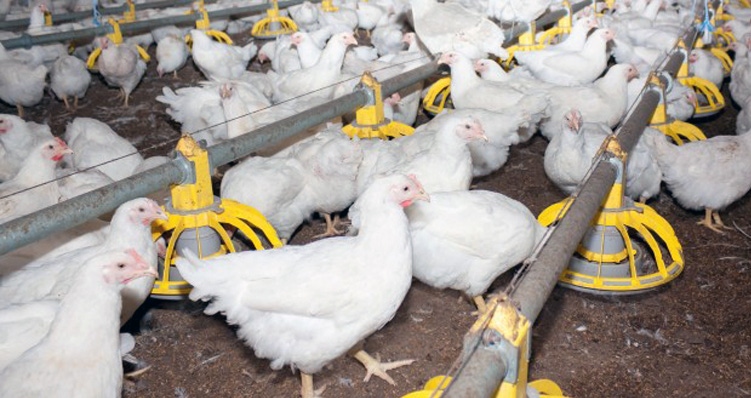June 16, 2015

While avian influenza has been confirmed in 20 states, Alabama remains free of the disease. Alabama poultry producers are doing all that they can to keep the disease at bay.
A poultry scientist with the Alabama Cooperative Extension System said poultry producers are more vigilant than ever when it comes to sanitation and other biosecurity measures.
“All our Alabama poultry growers have biosecurity measures in place,” said Dr. Ken Macklin . “Biosecurity measures are the first line of defense against avian influenza and other poultry diseases.”
Macklin said that more than 43 million chickens and turkeys have either died from the disease or had to be euthanized because the flock tested positive for a highly contagious forum of avian influenza in the first five months of 2015. The most severely impacted states are in the upper Midwest, including Iowa, Minnesota, South Dakota and Wisconsin.
“These cases in commercial poultry operations in the upper Midwest have mostly been linked to a failure of biosecurity,” said Macklin. “Growers may have thought they were following biosecurity guidelines fully, but it seems that there were lapses.”
Macklin, who is also an associate professor of poultry science at Auburn University, said strong biosecurity measures take many forms.
Isolating the birds from other animals
Minimizing access to people and unsanitized equipment
Keeping the area around the poultry buildings clean and uninviting to wild birds
Sanitizing the facility between flocks
Cleaning equipment entering and leaving the farm
Having an all in, all out policy regarding the placement and removal of the birds
Disposing properly of bedding material and any mortalities
Dr. Joseph Giambrone, an Auburn University professor of poultry science, called the losses to the national poultry industry staggering.
“The losses are in the hundreds of millions of dollars,” said Giambrone. “We can expect a reduction of at least 10 percent in egg laying production and a similar drop in turkey production nationally.”
Macklin said the potential production loss is why Alabama producers are working hard to keep their flocks free of the disease. According to Auburn University research done in 2012, poultry and egg production and processing contributed more than $15 billion to the state’s economy and employed more than 86,000 people.
Giambrone, whose research focuses on viral diseases of poultry, said the disease is spread by migrating water fowl such as ducks and geese.
“This outbreak began in Canada, and water fowl spread it south along the migratory bird flyways,” he said. “It was brought into the Midwest by birds using the Mississippi flyway. It has persisted so long there because of the heavy concentration of poultry producers in that region of the country.”
Virus can survive 100 days
Giambrone explained ducks and geese shed the virus in fecal material.
“Infected water fowl shed the virus into ponds and lakes as well as onto the land they are grazing.”
Macklin added that warmer weather may slow the disease’s spread.
“The virus can survive for days especially if it is in water. In water, the virus can survive up to 100 days with a water temperature of 63F. But when water temperatures reach the 80s, the virus can survive for less than a month.”
He said the virus has a reduced ability to survive on land.
“On land, the virus can survive for 30 days at 40oF and 7 days at 68oF,” said Macklin. “Once the outside temperature hits the 80s the virus breaks down in hours.”
While warmer weather may halt the disease’s progress in the United States, Giambrone emphasized that the disease can return next year.
“Even if we get control of the disease this year, wild water fowl in Alaska and Canada remain carriers of the disease and are a threat to bring it back to the United States when they migrate again next year.”
You May Also Like




